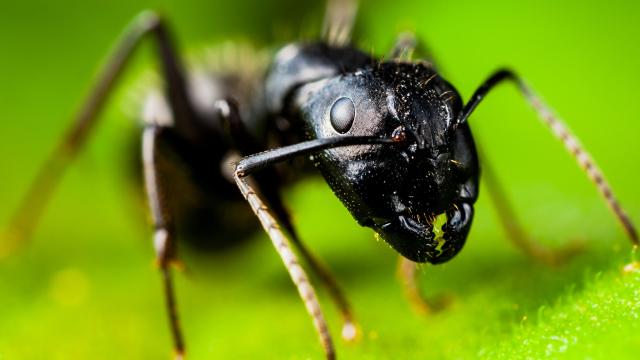Ants in your home is always a cause for concern. Aside from the appearance of a long wriggling trail of ant soldiers just looking gross, ants can carry bacteria and mould spores into your food supplies (including pet food), so anything that ants come into contact with in your pantry needs to be thrown away. For another, not all ant species are harmless: Fire ants and crazy ants (really, that’s what they’re called) both bite, and carpenter ant will destroy your house if left unchecked.
So, when you see ants in your house, you should of course take steps to eliminate them. If store-bought baits and poisons aren’t stopping them, you very likely have a nest inside your home somewhere, and you’re going to need to find it — especially if you’re dealing with carpenter ants. Here’s how to find an ant nest.
Trail the trail
Most ants nest in moist, dark places, and they tend to emerge mostly at night in search of food. The first place you’ll see most ant invasions are bathrooms and kitchens, because that’s where the moisture is. A good first step toward finding a nest is to follow the trails they create when they locate a food source. This can be frustrating due to the tendency of ants to wait until you’re asleep before heading out for the night, so plan ahead and try to engineer things a bit:
- Take a jar lid or a shallow dish and put some honey and/or peanut butter on it, then place it in an area where you’ve seen the tiny critters.
- Wait. Keep checking back until you see ants forming up a conga line to feast.
- Follow the trail back to its origin.
There are a few things to keep in mind: Ant trails can be a little disorganized. Every time an ant scout heads out in search of ant resources, they put down a pheromone trail for other ants to follow. This often results in ants wandering about like drunken sailors when returning home because they keep chancing on an old trail. Eventually they find their way, but you should start with a wide view and try to observe the overall direction of the ants instead of following one individual. Eventually, the trail will lead you to the crack, seam, or tiny hole the ants are using to enter your house, which will be located very close to their nest. Concentrating your baits and other treatments at that spot will be most effective.
Spot the signs
If you can’t follow a trail of ants, you can look for the tell-tale signs of a nest. These vary slightly depending on species:
- Wood shavings (also called “frass”) are essentially sawdust produced by carpenter ants. As they work diligently to turn your house into rubble, they push the excavated wood out through their tunnels.
- Dead ants. You might think seeing a bunch of dead ants is evidence that God favours you and is smiting your home invaders, but it’s really just a sign that the nest is nearby.
- Swarms. One sign that carpenter ants have made your home their home is discovering a bunch of winged, flying ants in your house. They are often attracted to light and appear at night as if by magic. This happens when a carpenter ant nest has hit peak population, and a bunch of drone ants grow wings and swarm out to find mates and start a new nest, so if you’re seeing them you’ve got a bigger problem than you think. Other swarming ants include pharaoh ants, which won’t damage your wood but can pose a health risk.
- Sounds. Want to be horrified? If you think you have carpenter ants, listen to your walls. If the tiny monsters are burrowing into your framing, you will hear rustling and clicking. Tapping lightly on the wall as you listen will often rouse them into a flurry of activity.
- Moisture. Seeing ants in the house — especially carpenter ants, who love damp, rotting wood — means it’s a good time to look for a leaking roof, window, toilet, or appliance.
Check your perimeter
Even if you’re seeing ants inside the house, the nest might be outside. If you’ve followed a trail to an exterior wall, door, or window, the nest is probably outside. Here’s what to look for:
- Wood. If you’ve left a pile of old wood outside after a home project — even treated wood — get rid of it. There’s a non-zero chance that when you move it you’ll find ants have chewed some of it to pieces and/or established a nest underneath it.
- Dirt mounds. Many species of ant nest in the dirt. As they tunnel down, they excavate the dirt, creating a tell-tale mound with a hole in the middle.
- Aphids. One of the more fascinating aspects of ant life is that they often use other insects as livestock. Aphids, those tiny green or red insects that devour your plants, are often kept by ant colonies that feed off their excretions. If you have aphids in your garden and ants in your house, you’ll probably find the ant nest near the aphid herd.

Leave a Reply
You must be logged in to post a comment.